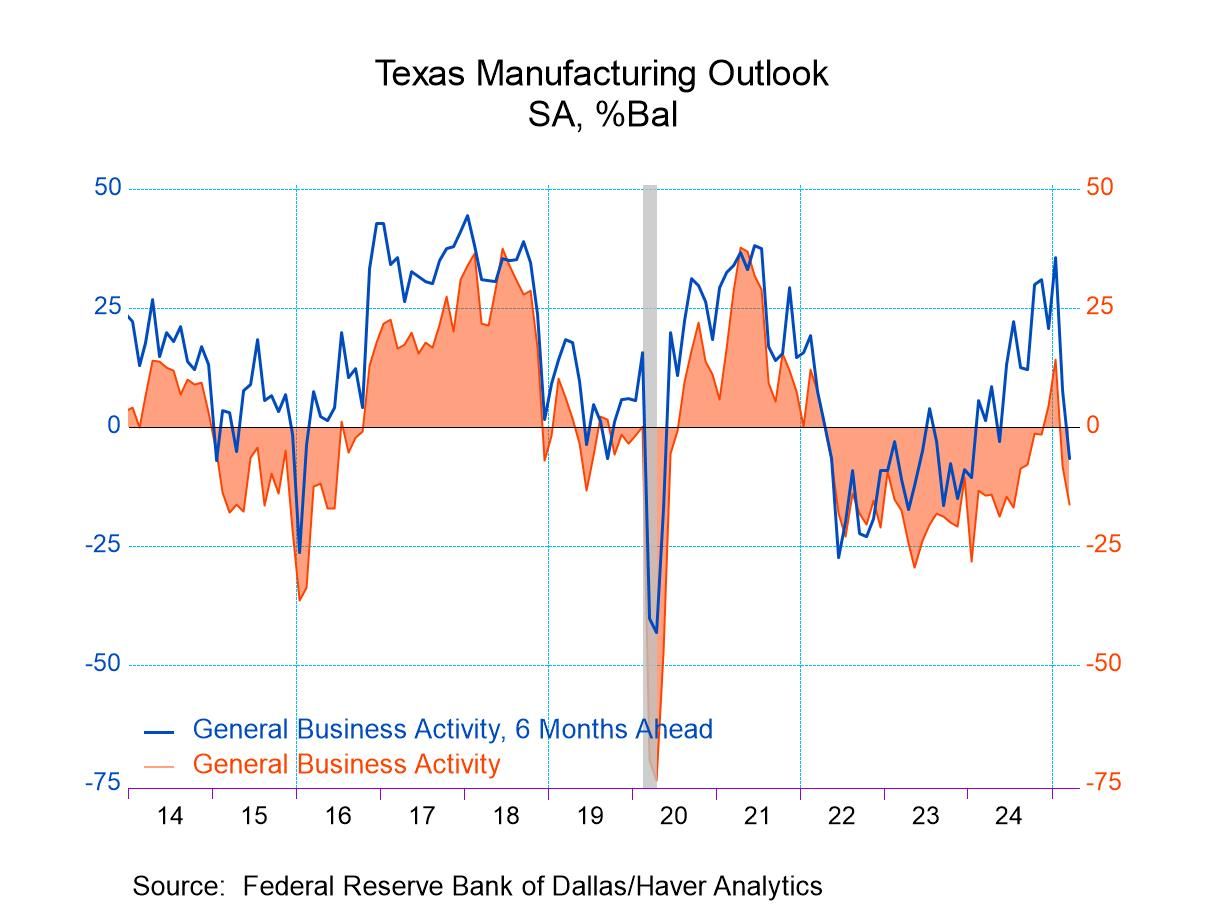German IP Rebounds in November, But Remains Weak

German industrial output advanced in November but is currently riding a string of 18 straight months of year-over-year declines for output excluding construction (the headline series).
The increase in monthly output marks ‘one in a row,’ two increases in the last four months, and three increases in the last six months. There have been six month-to-month increases in the last 12 months. Still, the year-on-year change is -2.8%, an improvement from drops of five-percent or so in September and October but August of 2024 showed a year-on-year drop of only 2.7%; yet, that was not a signal of coming improvement.
Apart from output itself, order momentum is not improving. Real manufacturing orders fell by 5.4% in November after falling by 1.5% in October, but that series has risen a strong 7.2% month-to-month in September. Real orders show a progression toward less decline over three months, six months, and 12 months. Still, the quarter-to-date annualized change in real orders is falling at a 7.1% annual rate.
On balance, it is hard to say that there is any light at the end of the tunnel for German output and its prospects based on IP trends or on real-order trends.
Sales trends are not much better although real sales rose by 1.4% in November; the decline over three months, six months and 12 months and have ‘generally’ been weakening.
Surveys show weakened trends from 12-months to 3-months.
In addition, the queue standings of all the IP categories, orders, real sales and the relevant German surveys have low standings- in all cases below 50%- putting all of them below their historic medians. The surveys are especially weak with standings below the 15th percentile in all cases. Among manufacturing output, real orders, and real sales the strongest standing is orders with a percentile of 33%. For the IP headline series itself, the standing is at its 18.4 percentile; consumer goods is strongest at a standing of 31.2%, with capital goods at 22% and intermediate goods at 17.4%. The readings for manufacturing in Germany are weak no matter how you view them.
The table also surveys early IP data for Portugal and Norway. These queue standings apply to year-on-year growth rates, and both are above the German standing of 18.4%, with Portugal at 39% and Norway at a 52.7 percentile standing above its historic median.
The far-right column also assesses the current IP level relative to where it stood on January 2020. The IP headline index is 12 IP index points lower. Construction is 13 index points lower; manufacturing as a total is 10.8 points lower, similar to the drops for real manufacturing orders and for real manufacturing sales. The surveys are on very different scales. The ZEW current index is 81.9 points lower, with the IFO manufacturing index lower by 8.8 points. Despite the difference in the construction of these indexes, these drops both have percentile standings in the 4% to 5% range. Skipping down the table, we quickly see Portugal has fallen by 9.9 IP points compared to its January 2020 level, while Norway has risen by 1.1 point and has an above-median standing, as a result.
These data are disappointing. Quite apart from the near-term momentum – which is weak- the big picture is severely impacted. And it is not getting better despite a small increase in the November output.

Robert Brusca
AuthorMore in Author Profile »Robert A. Brusca is Chief Economist of Fact and Opinion Economics, a consulting firm he founded in Manhattan. He has been an economist on Wall Street for over 25 years. He has visited central banking and large institutional clients in over 30 countries in his career as an economist. Mr. Brusca was a Divisional Research Chief at the Federal Reserve Bank of NY (Chief of the International Financial markets Division), a Fed Watcher at Irving Trust and Chief Economist at Nikko Securities International. He is widely quoted and appears in various media. Mr. Brusca holds an MA and Ph.D. in economics from Michigan State University and a BA in Economics from the University of Michigan. His research pursues his strong interests in non aligned policy economics as well as international economics. FAO Economics’ research targets investors to assist them in making better investment decisions in stocks, bonds and in a variety of international assets. The company does not manage money and has no conflicts in giving economic advice.






